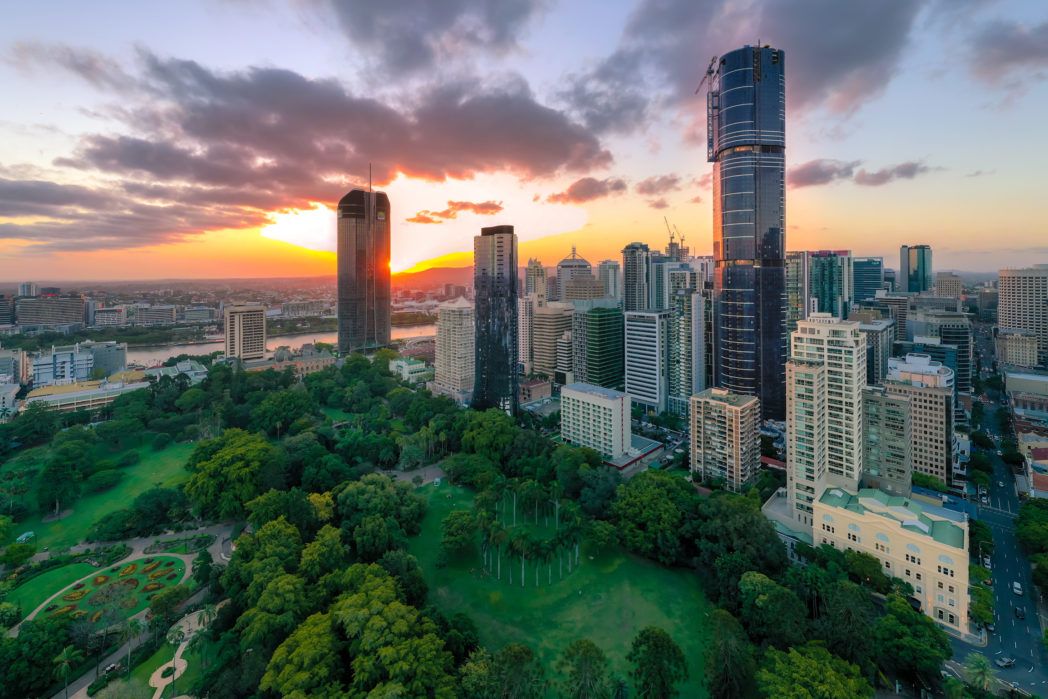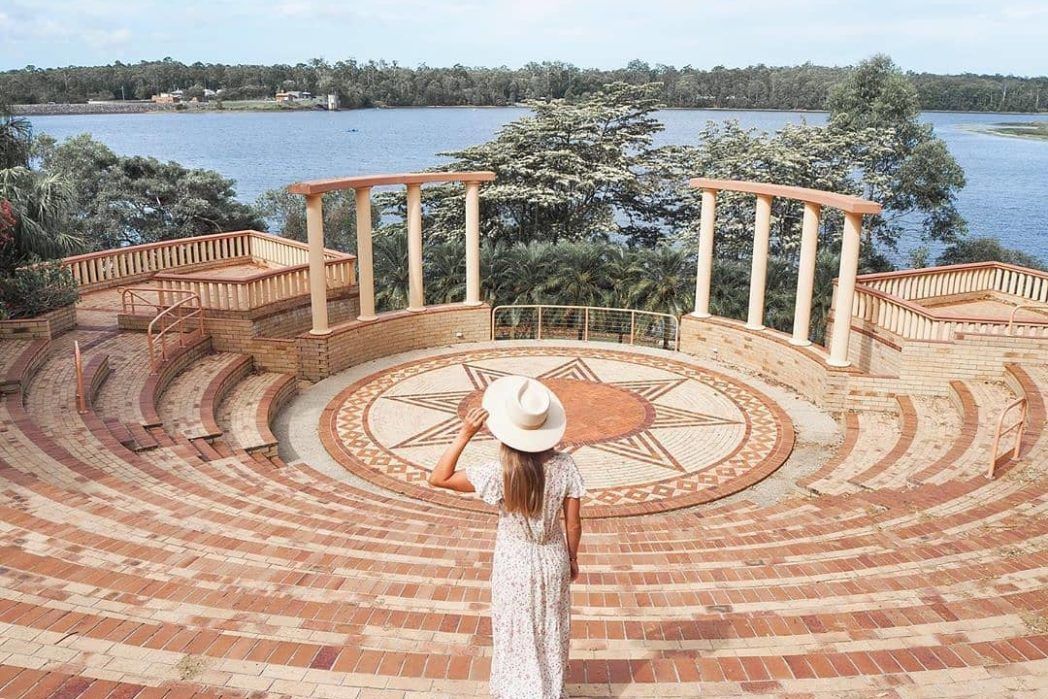The Best Botanic Gardens and Flower Festivals in Queensland
List
By Catherine Blake
Offering fresh air and a feast for the senses, Queensland is dotted with pockets of lush public gardens and beautifully curated grounds.
But it’s not all just for show, botanical gardens double as functional work spaces for undertaking scientific or technical research. You’ll notice that plants are often labelled, and there’s often a knowledgeable park keeper nearby to tell you more than what’s written on the plaque. So wherever you are in Queensland, there is a lush location to appreciate native flora and deepen your understanding of horticulture.
Here’s your roadmap to discovering Queensland’s finest botanicals:
Brisbane Botanic Gardens, Mt Coot-tha

Photo by @maxandemtravels
Let’s begin just outside Brisbane City at the state’s ‘premier subtropical botanic gardens’. The collection sits on 52 hectares of parkland, and offers a multi-faceted garden experience to suit just about anyone. A living museum filled with cactuses and desert flora, a bonsai house, a Japanese garden, a tropical dome, and a hide ‘n’ seek kids trail are just a few of the attractions awaiting you in this green haven.
City Botanic Gardens, Brisbane CBD

Located on the edge of Brisbane River, the City Botanic Gardens are the perfect spot to escape the hustle and bustle and catch your breath among the trees. On the other side of Alice Street, this oasis hooks around where the city juts into the river. Combining beautiful gardens with historical centrepieces, the gardens feature ponds, fountains, a bamboo grove, paths lined with Weeping Figs, and stunning green spaces for all to enjoy.
Sunflower Fields, Queensland Country

Photo by @Adrianafordphotography
Every year between January and March, the road from Allora to Warwick transforms into the Sunflower Trail. When the conditions are right, this 26km stretch of road becomes flanked on both sides by fields of bright yellow sunflowers. Besides a decent amount of rainfall, the secret to their bloom lies in the black alluvial soil, a potent and fertile earth that helps to cultivate oats, wheat, barley, and sorghum in the Queensland countryside. Just note that due to drought conditions sometimes the sunflowers don’t bloom, so make sure you contact the Warwick Visitor Information Centre before setting off.
Toowoomba Carnival of Flowers

Photo by @ laurene_bardsley
Every year, the Toowoomba Carnival of Flowers brings together an eclectic mix of culture. Taking place in late September when the gardens are in full bloom, the carnival showcases Toowoomba’s now famous public gardens, as well as the efforts of local green thumbs with the annual garden competition. With street parades, live concerts, and plenty of paddock-to-plate dining to show off the produce of the Darling Downs, the event has evolved far beyond its beginnings as a simple celebration of flowers. If your visit falls either side of the festival, stop by Toowoomba’s Japanese Gardens for a truly authentic and deeply restorative gander through the blossoms.
Noosa Botanic Gardens

Photo by @ eveliinaiv
Planted on farmland at the edge of Lake Macdonald, the Noosa Botanic Gardens are a coastal oasis. Just a short drive from Cooroy, these gardens stretch over eight hectares, boasting exotic plant species as well as grassy lawns for picnics, a lily pond, a fern house, an open-air bush chapel, and a Grecian amphitheatre overlooking the lake. It’s easy to fall in love with these gardens, which is why the Friends of the Noosa Botanic Gardens was formed. This social group meets regularly to discuss and are always willing to welcome new faces.
Maleny Botanic Gardens

Photo by @ notpacific
Have you ever had tea with a Macaw? Spread over 18 acres, the Maleny Botanic Gardens and Bird World offer an intimate glimpse into the world of Frank Shipp, who established the parkland as a sanctuary for botanists and ornithologists alike.
The sprawling grounds have rainforest walks, ponds, waterfalls and terraced gardens including rare orchids and cycads. But this is only half of it.
The Maleny Botanic Gardens are also home to 58 species of native and exotic birds in their resident Bird World. Constructed of four walk-through aviaries, the sanctuary houses 700 birds, which you can meet during one of their interactive guided tours.
Afterwards, drop a picnic in one of their 18 gazebos and soak up the views of the surrounding rainforest and Glass House Mountains in the distance.
Paronella Park, Cairns and Great Barrier Reef

Photo by @ arturosandiaz
A long drive (or quick flight) north will deliver you into the mist and mystery of Paronella Park. Located next to Mena Creek Falls, just south of Innisfail, this tropical parkland was built in the 1930s by a heartbroken Spanish cane farmer, Jose Paronella. It covers five hectares of lush tropical plants, trees and ferns, with central structures inspired by the Catalan castles of Paronella’s childhood.
The park was first opened to the public in 1935, and was something of a community hub in its heyday with tennis courts, refreshment rooms, and even a movie theatre. After being ravaged by a fire in 1979, the park was re-discovered and revived in the 1990s. Since then, the park has returned to its status as a recreational space for the community, and enjoys an eco-certification and a heritage listing. Jose Paronella would be proud.
Flecker Botanic Gardens, Cairns

Photo by @ _ben_s
Further north, you will find Flecker Botanic Gardens – the only wet tropic botanic garden in Australia. Right in the heart of Cairns, the lush parkland cultivates tropical flora across five botanic spaces from an orchid house, a fernery, and rainforest boardwalk, to an Indigenous plant use garden, and salt and freshwater lakes.
Under the care and protection of the park keepers, the botanic gardens’ numerous species of plants have been thriving for over a century. Their soil fosters some plants rarely found in the wild, like the Amorphophallus titanum which comes from the equatorial rainforests of Indonesia.
The tropical Flecker Gardens are just one aspect of Cairns’ broader Botanic Gardens, which also includes Centenary Lakes, the Mt Whitfield Conservation Park, and the Tank Arts Centre.
